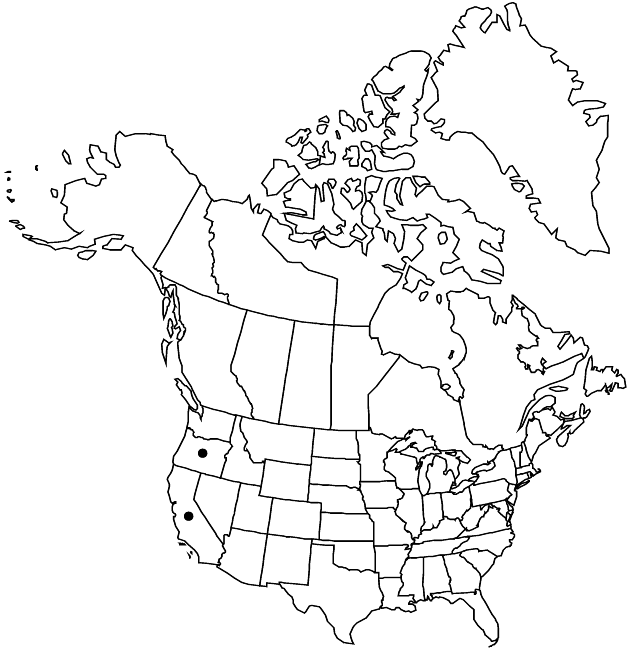Microseris laciniata subsp. detlingii
Sida 21: 200, figs. 2E, F, 4. 2004.
Stems simple. Leaves lanceolate or oblanceolate, usually entire, rarely sparingly pinnately lobed. Outer phyllaries sometimes purple-spotted, elliptic-ovate, smallest (2.5–)4 mm wide, apices (erect), acute or cuspidate, abaxial faces glabrous. Pappi of 9–15, silvery to dull white, linear-lanceolate aristate scales 4–8 mm, aristae barbellate. 2n = 18.
Phenology: Flowering May–Jun.
Habitat: Heavy clay soils, open hillsides, grasslands, and shrublands
Elevation: 600–1500 m
Discussion
Of conservation concern.
Subspecies detlingii is known only from the Siskiyou Pass region and adjacent foothills of southern Jackson County, Oregon, and Siskiyou County, California. It is found only in clay soils that become very sticky when wet. The plants are unusual in their relatively long pappus scales, simple habit, and deeply penetrating taproots (K. L. Chambers 2004b). Clonal reproduction occurs by buds arising on lateral roots.
Selected References
None.
